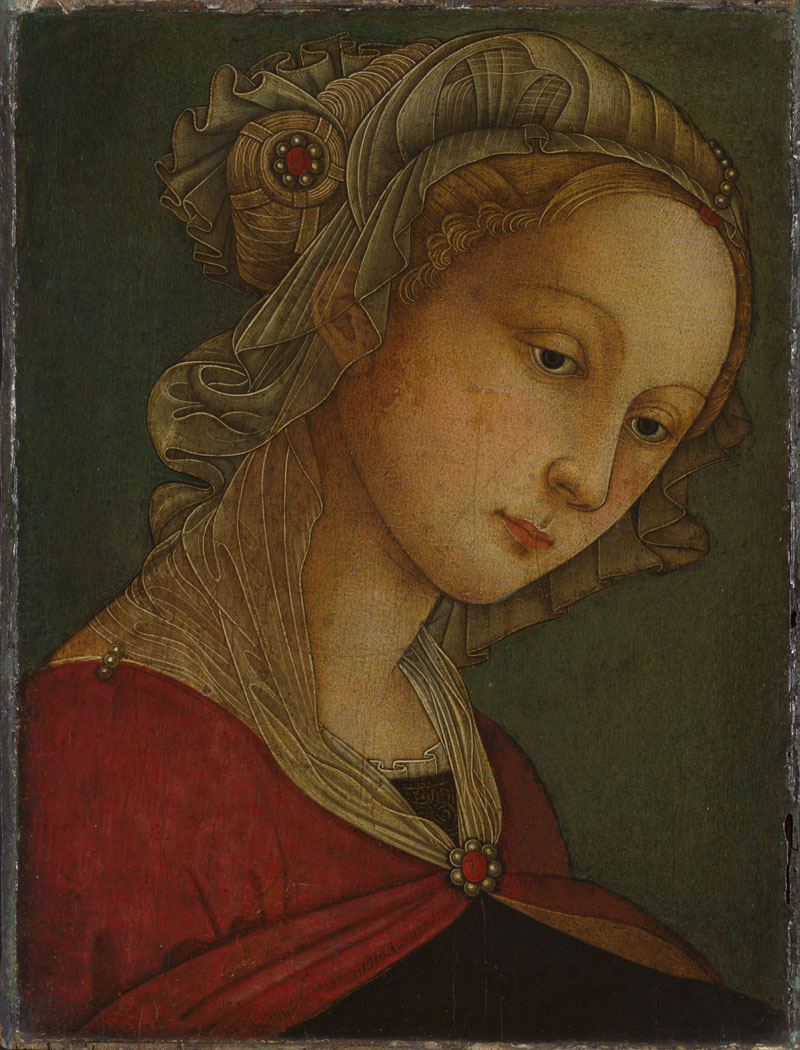Provenance

The painting was acquired by Helene Kröller-Müller at Kunsthandel Steinmeyer in Cologne around 19 July 1912 for 2,700 guilders as a Madonna from the school of Filippo Lippi. The painting's earlier provenance is unknown. In a letter to Sam van Deventer on 22 August 1912, Helene Kröller-Müller devotes two paragraphs to the purchase of this ‘Head of the Madonna’. That's how delighted she is with it. When she sets up her first museum on Lange Voorhout in The Hague in January 1913, she makes room for her older art alongside the growing collection of modern art. This panel is hung in a small walk-through room together with other ‘devout art’, including the painting The Source of Life (1908) by Frère Angel and a drawing of the interior of the St Bavo church in Haarlem (circa 1628) by Pieter Jansz Saenredam. When the transitional museum opened on the Veluwe in 1938, it was hung in the Regency Room in the company of other old masters from her collection. In short, it was an important painting for Helene Kröller-Müller personally and is, partly for that reason, a valuable work for the museum. When this room was dispensed with following the museum's expansion with the sculpture gallery and auditorium, and due to director Bram Hammacher's preference for modern art, St. Catherine disappeared into storage in the 1950s. The painting, together with the other works from the walk-through room with ‘devout art’, will be shown again for the first time in the exhibition Searching for Meaning, after which it will be put on permanent display again following the future extension.
Art historical and material-technical research
A thorough conservation of the painting, which has not been on display for many years, is necessary for the upcoming exhibition, but to justify this time-consuming and costly treatment, more insight into its dating and attribution was first required. Is it a 15th-century painting by (the School of) Filippo Lippi (circa 1406–1469) or an Italian contemporary, or is it a later 19th-century copy?
The first preliminary results of the material-technical research indicate that the materials used in the painting (both the wood type of the panel and the binder and pigment used in the primer and paint layers) seem to correspond to those of (the School of) Lippi. As expected, the background appears to be a 19th-century overpainting or reconstruction. Further analysis of the XRF and Raman measurements carried out by the RCE and of three samples of the primer and paint layers is currently underway. Thus, the extensive conservation treatment certainly seems worthwhile, not only due to the painting's historical importance for the Kröller-Müller collection, but also because of its wider art-historical significance.
Desired conservation
The panel of the painting has been thinned and cradled during a previous conservation treatment. However, the horizontal battens of this cradle have become locked over time, creating a risk of cracks forming in the panel when climatic fluctuations occur. An old woodworm infestation has further weakened the panel. On the other hand, the aesthetic condition of the painting is also poor. A thick yellowed varnish layer is evident on the paint layers, as well as some noticeably discoloured retouching and several distracting scratches.
The treatment will consist of the following steps:
- unlocking the sliding battens of the cradle
- consolidation or possibly impregnation of the woodworm infestation
- removal of surface grime
- removal of the yellowed varnish layer
- removal of discoloured retouching
- application of varnishes
- filling and retouching of lacunas, worn areas and scratches
- photo documentation and reporting
It is very likely that once the surface dirt, yellowed varnish and discoloured retouches have been removed, it will be possible to better study the painting technique and use of materials, which will contribute to the attribution of the painting.
Planning
The conservation treatment will be carried out by conservator Luuk Hoogstede of SRAL (Stichting Restauratie Atelier Limburg), a conservator specialising in the treatment of paintings on panel. The treatment will take an estimated four weeks, with a maximum of five weeks, including research and reporting, and will take place at the SRAL studio in Maastricht during the summer of 2024, so that it can be displayed in optimal condition at the exhibition at the Kröller-Müller Museum from 5 October 2024.
Costs
The conservation costs are estimated at €14,400 to €18,000 excluding 21% VAT and excluding transport and insurance costs. The actual costs will only be known for sure after the conservation has been completed. The Helene Kröller-Müller Fund will contribute €18,000 to this conservation.
